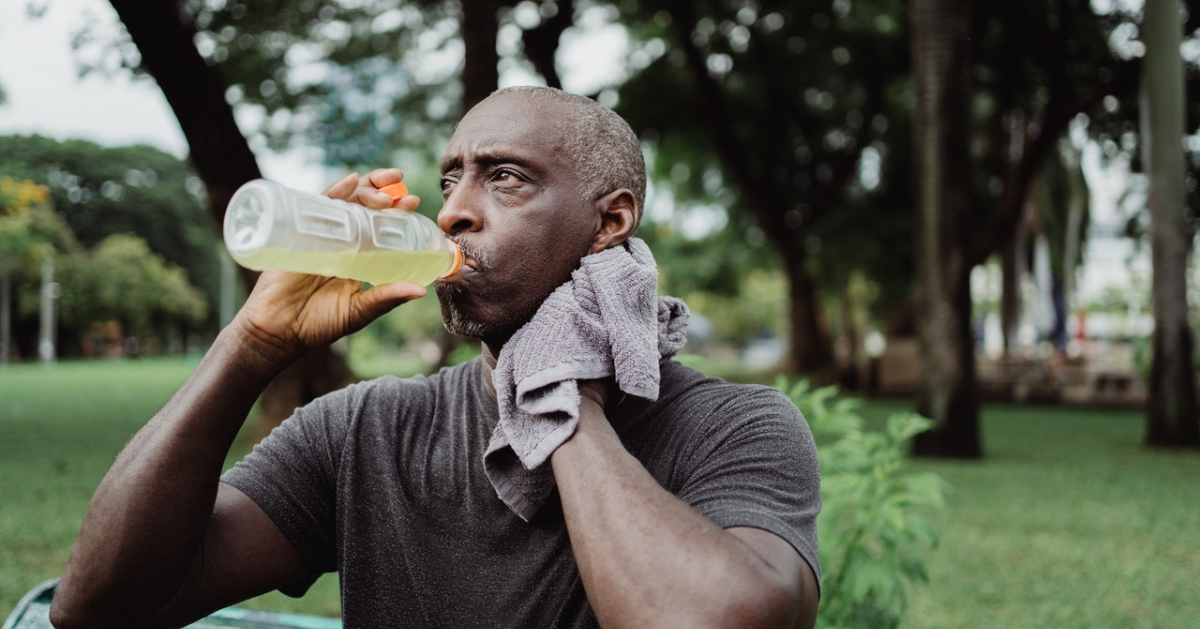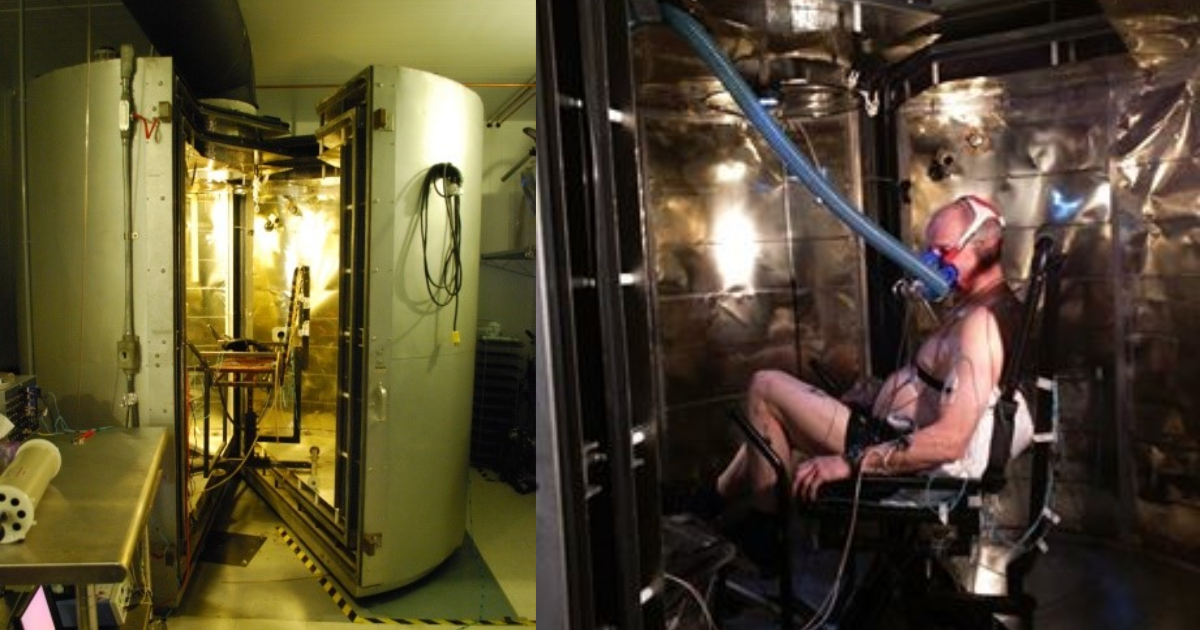
uOttawa study finds regulation of body temperature in older adults is not impacted by increases in osmolality – or saltiness – of the blood
Exercise, especially when performed in a hot environment, exposes the body to heat stress, which causes an increase in body temperature. This causes our bodies to sweat and lose fluid, meaning that we must drink water, or other beverages, to prevent dehydration. Robert Meade and Glen Kenny from the Faculty of Health Sciences at the University of Ottawa examined how physiological interactions between body fluid and temperature regulation change with age. The study found that as we age, elevated blood osmolality – or high salt content in the blood –, which occurs as we become dehydrated, has less impact on body temperature regulation in older men, making hydration especially important as the ability to preserve body fluid decreases. They published their most recent findings in The Journal of Physiology.
We talked to the lead investigator Robert Meade, Doctoral Student at the Human and Environmental Physiology Research Unit in the School of Human Kinetics, to learn more.
What did you discover?
“The primary finding of our study is that elevated blood osmolality impairs body temperature regulation to a lesser extent in older compared to younger men during exercise in the heat.
Blood osmolality increases as we become dehydrated during exposure to a hot environment or during exercise in the heat. This increase in osmolality, or salt content, in the blood triggers our thirst response and reduces the bodies sweat rate.
While the reduction in sweat rate causes us to lose less heat and experience greater body temperatures, these adjustments also limit further fluid losses and slow the rate of dehydration. Thus, the physiological responses to dehydration act to balance the body’s fluid and temperature regulatory needs. Our findings indicate that these adjustments are blunted in older adults.”
Why is it important?
“As we get older, we become less efficient at regulating our body temperature and hydration status. These factors are thought to contribute to the increased risk of mild heat-related injuries (e.g. heat exhaustion) and severe heat-related injuries (e.g. heat stroke), as well as adverse cardiovascular events experienced by older adults during heat stress, such as during a heatwave. We offer more details on this specific topic in a recent review article.
Our findings provide important insight into how the integrated regulation of body temperature and hydration is impacted by aging.
This knowledge may allow us to better tailor strategies for managing both body temperature regulation and hydration status during heat exposure in older adults. As we age, we may need more frequent reminders to drink water while working in a hot environment or during heat waves, since we are less thirsty and our ability to preserve body fluid decreases.
More research will be required to support these claims, as we know very little regarding the consequences of these changes in ‘real-life’ situations.”
How was the research conducted?
“Groups of young and older men participated in two exercise-heat stress trials on separate days.
Upon arriving to the laboratory, the participants received an intravenous infusion of saline solution through an IV catheter inserted into their arm. In one trial, the saline solution had a salt content comparable to the blood. In the other trial, the salt content was about three times higher than that of blood – a sodium content equivalent to about 40 standard sports drinks – which allowed us to raise osmolality to a level similar to that observed during dehydration.
Following the saline infusion, the participants were transferred to a whole-body direct calorimeter, a one-of-a-kind research device used by our group that allows us to directly measure the total rate of heat loss over the entire body surface during exercise or heat stress.
Before the trial, the calorimeter was heated to 40°C and 15% relative humidity, which has a thermal index (humidex) like the heat felt during heat waves in Ottawa, where the study was conducted.
The participants performed 60 minutes of exercise at approximately 50% of their maximum aerobic capacity, the equivalent of a jog.
We then directly compared the physiological responses, including whole-body heat loss and body core temperature, between the young and older participants when they had normal and elevated osmolality.

This study was performed as a follow up to a similar research we published in 2019. In that previous work, young and older participants were dehydrated, causing increased osmolality and reduced blood volume, whereas in the current study, osmolality was raised artificially and independently of changes in blood volume. These complimentary studies showed almost the same findings.”
Is there anything you’d like to add?
“The research took place at the University of Ottawa’s Human Environmental Physiology Research Unit. The project started in early 2018 and data collection was completed late 2019. The research was funded by the Natural Sciences and Engineering Research Council of Canada (NSERC).”
The article “Ageing attenuates the effect of extracellular hyperosmolality on whole-body heat exchange during exercise-heat stress,” was recently published in The Journal of Physiology.
For media inquiries:
Justine Boutet
Media Relations Officer
Cell: 613.762.2908
[email protected]
